Eco-Friendly Burials: Reducing Death's Environmental Impact
As we navigate through life, one of the most profound realities we face is the inevitability of death. However, what if we told you that the way we say goodbye can also reflect our commitment to the planet? Eco-friendly burials are gaining traction, not just as a trend but as a vital movement towards sustainability. These practices allow us to honor our loved ones while simultaneously reducing our environmental footprint. Imagine a world where our final resting places contribute positively to the earth, rather than detract from it. This article dives deep into the various eco-friendly burial methods, their benefits, and how they can help us protect our planet for future generations.
Eco-friendly burials encompass a variety of practices that prioritize sustainability and ecological responsibility. Traditional burial methods often involve the use of non-biodegradable materials, chemical embalming fluids, and expansive land use, all of which can have detrimental effects on the environment. In contrast, green burials focus on natural decomposition and the preservation of natural resources. These methods not only offer a more sustainable way to honor the deceased but also promote a deeper connection with nature. By choosing eco-friendly options, families can play a significant role in reducing carbon emissions and conserving natural habitats.
One of the most significant benefits of green burials is their ability to contribute to healthier ecosystems. Unlike conventional burial practices, which can disturb the natural landscape, eco-friendly methods often involve the use of biodegradable caskets and urns, allowing the body to decompose naturally. This process enriches the soil and supports plant growth, creating a cycle of life that benefits the environment. Furthermore, families who opt for green burials often report emotional satisfaction, knowing they are making a choice that aligns with their values and contributes to the greater good.
In the realm of eco-friendly burials, natural burial grounds stand out as a serene and sustainable alternative to traditional cemeteries. These grounds are designed to blend seamlessly into the natural landscape, providing a peaceful resting place for loved ones while preserving the beauty of the environment. By choosing a natural burial site, families contribute to the conservation of land, allowing it to remain untouched by the trappings of modern development. This not only promotes biodiversity but also ensures that future generations can enjoy these green spaces.
Moreover, many natural burial grounds engage in land conservation efforts aimed at protecting local ecosystems and supporting wildlife habitats. These initiatives can include planting native species, restoring natural habitats, and maintaining green spaces for the community. By participating in these efforts, families can help create a legacy that extends beyond their loved ones, fostering a healthier planet for all living beings.
Community involvement is another crucial aspect of establishing and maintaining natural burial grounds. Local residents can play an active role by volunteering, participating in conservation projects, or simply spreading awareness about the benefits of eco-friendly burials. This sense of community fosters a shared responsibility for the environment and encourages individuals to consider their own end-of-life decisions in a more sustainable light. Together, communities can create spaces that honor both their loved ones and the earth.
Another essential component of eco-friendly burials is the use of biodegradable caskets and urns. These products are made from materials that break down naturally, allowing for a seamless return to the earth. Common materials include bamboo, wicker, and recycled cardboard, each offering a unique and sustainable option for families. By choosing biodegradable options, families can significantly reduce the waste associated with traditional burial practices and contribute to a healthier planet.
Understanding the legal landscape surrounding eco-friendly burials is vital for families considering these options. Each state has different regulations governing burial practices, which can impact the choice of burial methods. It's essential for families to be informed about these laws to ensure their decisions align with local requirements. Additionally, permitting and zoning laws can influence the establishment of natural burial grounds, making it necessary for advocates of sustainable practices to navigate these legalities carefully.
In conclusion, eco-friendly burials offer a meaningful way to honor our loved ones while making a positive impact on the environment. By opting for sustainable practices, families can contribute to the preservation of natural resources, support biodiversity, and foster a sense of community. As we consider our final resting places, let us choose options that reflect our values and commitment to the planet, ensuring a legacy that benefits generations to come.
- What is an eco-friendly burial? An eco-friendly burial is a sustainable method of interment that minimizes environmental impact, often involving biodegradable materials and natural burial grounds.
- Are eco-friendly burials legal? Yes, eco-friendly burials are legal in many places, but regulations vary by state, so it's important to check local laws.
- What materials are used for biodegradable caskets? Common materials include bamboo, wicker, and recycled cardboard, all of which decompose naturally.
- How can I find a natural burial ground? You can search online for natural burial grounds in your area or consult local funeral homes for recommendations.
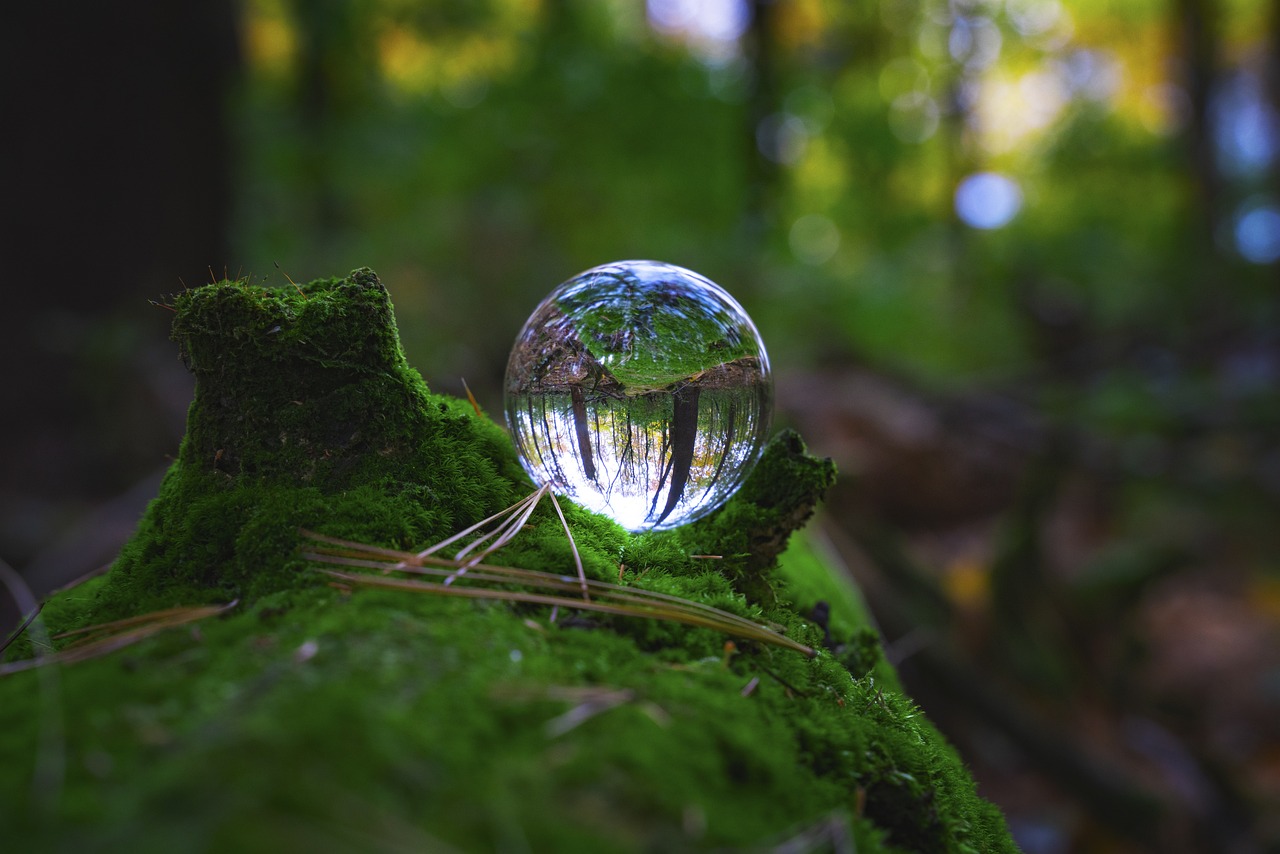
Understanding Eco-Friendly Burial Options
When it comes to saying goodbye to our loved ones, traditional burial methods often leave us grappling with a heavy heart and an even heavier environmental footprint. But what if there was a way to honor our loved ones while also being kind to the planet? Enter eco-friendly burials. These practices embrace a variety of methods designed to minimize environmental impact, allowing us to cherish memories without compromising the Earth.
Eco-friendly burial options are not just about saving the planet; they represent a fundamental shift in how we think about death and the legacy we leave behind. Imagine a world where our final resting places contribute to the health of the ecosystem rather than detract from it. This is the essence of eco-friendly burials. They encompass a broad range of practices, including natural burials, the use of biodegradable caskets, and even cremation alternatives that focus on sustainability.
One of the most compelling aspects of eco-friendly burials is their commitment to sustainability. For instance, natural burial grounds often use land that is specifically designated to remain undeveloped, which helps preserve local flora and fauna. In these serene settings, bodies are buried without the use of toxic chemicals or non-biodegradable materials, allowing for a natural return to the earth. In fact, many of these sites actively promote biodiversity by planting native species and creating habitats for wildlife. This makes each burial not just a farewell, but a contribution to the ecosystem.
But the benefits of eco-friendly burials extend beyond environmental concerns. They also offer emotional and psychological advantages for families. Choosing a green burial can provide a sense of peace, knowing that their loved ones are contributing to the health of the planet. This can be a comforting thought during a time of grief, transforming the mourning process into a celebration of life and legacy. Families often report feeling a stronger connection to nature and their loved ones through these sustainable practices, making the experience both meaningful and healing.
To put it simply, eco-friendly burials are not just about the act of burying the dead; they are about creating a lasting impact on the environment and community. As more people become aware of these options, the movement towards sustainable end-of-life practices is gaining momentum. Whether through natural burial grounds or biodegradable caskets, each choice we make can echo through generations, promoting a healthier planet for all.

The Benefits of Green Burials
When we think about death, it often brings up feelings of sadness and loss. But what if we could also think about how our final resting place can help the environment? Green burials offer a way to honor our loved ones while also taking care of the planet. These eco-friendly options not only reduce carbon emissions but also conserve precious natural resources, making them a win-win for both families and the Earth.
One of the most significant benefits of green burials is their minimal environmental impact. Traditional burial practices often involve embalming fluids, metal caskets, and concrete vaults, all of which can contribute to soil and water pollution. In contrast, green burials use biodegradable materials that allow the body to decompose naturally, enriching the soil rather than harming it. Imagine a world where our final resting places contribute to the growth of trees and plants instead of being a burden on the environment!
Additionally, green burials can lead to healthier ecosystems. By opting for a natural burial, families support the preservation of natural landscapes and biodiversity. Many green burial sites are located in areas that are intentionally left wild, allowing native plants and animals to thrive. This means that when you choose a green burial, you're not just honoring your loved ones; you're also playing a part in protecting the planet. It's like planting a tree that will grow and provide life long after we're gone.
Let's also consider the emotional benefits of choosing a green burial. Families often find comfort in knowing that their loved ones are returning to nature. This connection to the earth can be incredibly healing during the grieving process. Instead of a sterile cemetery, families can visit a beautiful natural burial ground, surrounded by trees, flowers, and wildlife. It creates a space for reflection, remembrance, and even celebration of life. After all, isn't it comforting to think that our final resting place can be a place of beauty and tranquility?
Moreover, green burials can also be more cost-effective than traditional methods. With the rising costs of caskets, embalming, and burial plots, families often find themselves facing hefty bills during an already challenging time. Green burials can significantly lower these costs by eliminating many of the expensive components of traditional funerals. This allows families to allocate their resources in ways that truly honor their loved ones—perhaps by donating to a cause they cared about or creating a lasting memory in their name.
In summary, green burials bring a multitude of benefits: they reduce our environmental footprint, promote healthier ecosystems, provide emotional solace, and can even save money. By choosing eco-friendly burial methods, families can create a legacy that honors their loved ones while also caring for the planet. It’s a beautiful way to ensure that even in death, we can still contribute positively to the world around us.
- What is a green burial? A green burial is an environmentally friendly way of disposing of a body that avoids traditional practices such as embalming and metal caskets.
- Are green burials legal? Yes, green burials are legal in many places, but regulations may vary by state or country.
- What materials are used in green burials? Biodegradable caskets, shrouds, and urns made from natural materials such as wood, bamboo, or even recycled paper are commonly used.
- Can I have a ceremony with a green burial? Absolutely! Many families choose to have a meaningful ceremony that celebrates life and nature.
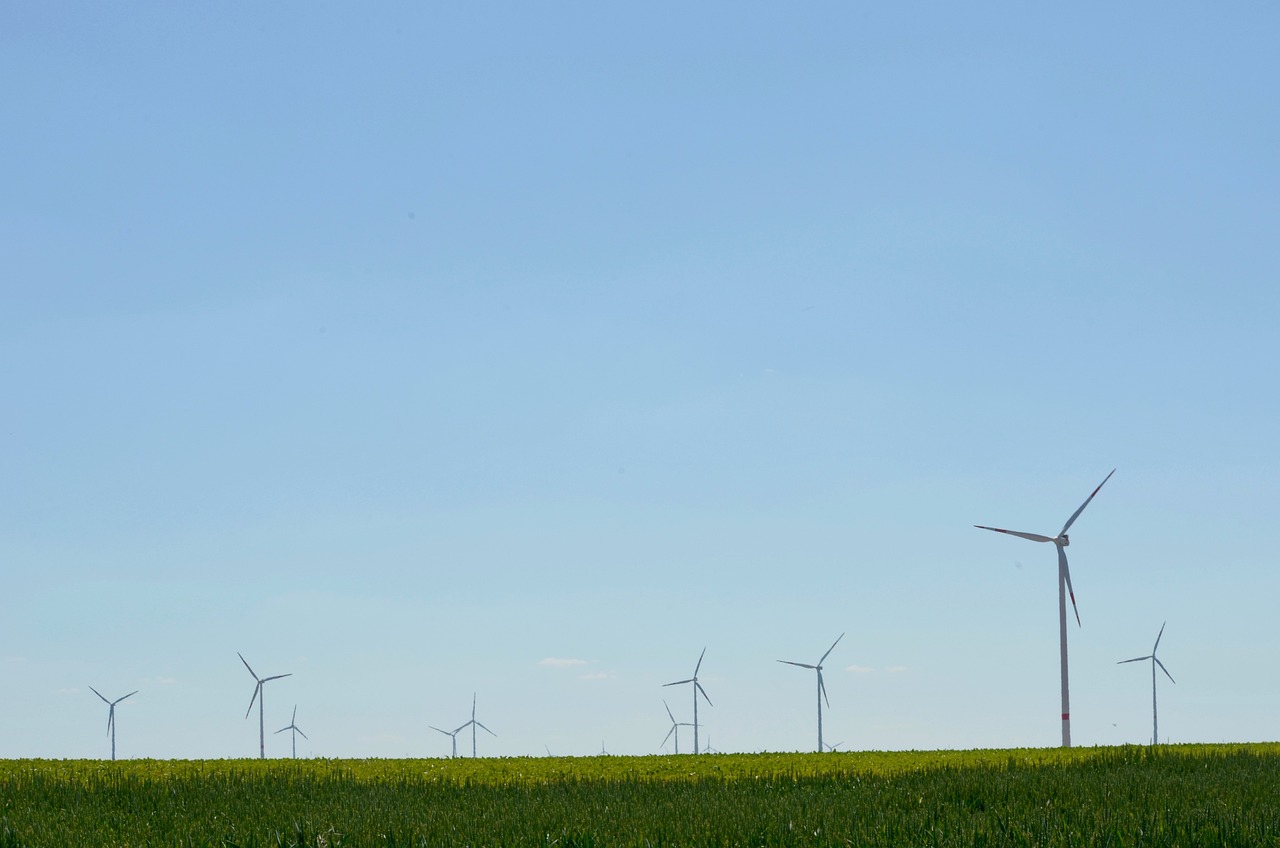
Natural Burial Grounds
Natural burial grounds offer a serene and sustainable alternative to conventional cemeteries, allowing families to honor their loved ones while simultaneously caring for the environment. These sites are often located in picturesque landscapes, such as forests, meadows, or nature reserves, where the natural beauty enhances the memorial experience. Unlike traditional cemeteries, which often feature concrete vaults and chemical embalming, natural burial grounds prioritize environmental sustainability and ecological responsibility.
One of the key characteristics of natural burial grounds is their commitment to biodegradable materials. This means that the caskets and urns used in these settings are made from organic materials that decompose naturally, returning to the earth without leaving a harmful footprint. Families can choose from a variety of options, including simple wooden caskets, woven baskets, or even shrouds made from natural fibers. This approach not only minimizes waste but also promotes a more harmonious relationship with nature.
In addition to their eco-friendly practices, natural burial grounds play a significant role in preserving biodiversity. Many of these sites are designed to maintain the existing flora and fauna, creating habitats for local wildlife and enhancing the overall ecosystem. By choosing a natural burial, families contribute to the conservation of these valuable natural spaces, ensuring they remain untouched and thriving for future generations.
Moreover, natural burial grounds foster a sense of community and connection. Families and friends can gather in these tranquil environments to celebrate the lives of their loved ones, creating meaningful memories in a place that embodies the essence of life and renewal. This communal aspect can be incredibly healing, as it encourages shared grief and remembrance in a peaceful setting. As people increasingly seek to align their values with their end-of-life choices, the popularity of natural burial grounds continues to rise.
In summary, natural burial grounds present a beautiful and sustainable option for honoring those we love. They embody a commitment to environmental stewardship while providing a serene space for reflection and remembrance. By choosing this path, individuals not only celebrate life but also contribute to the preservation of the planet, making a lasting impact that extends beyond their own lifetimes.
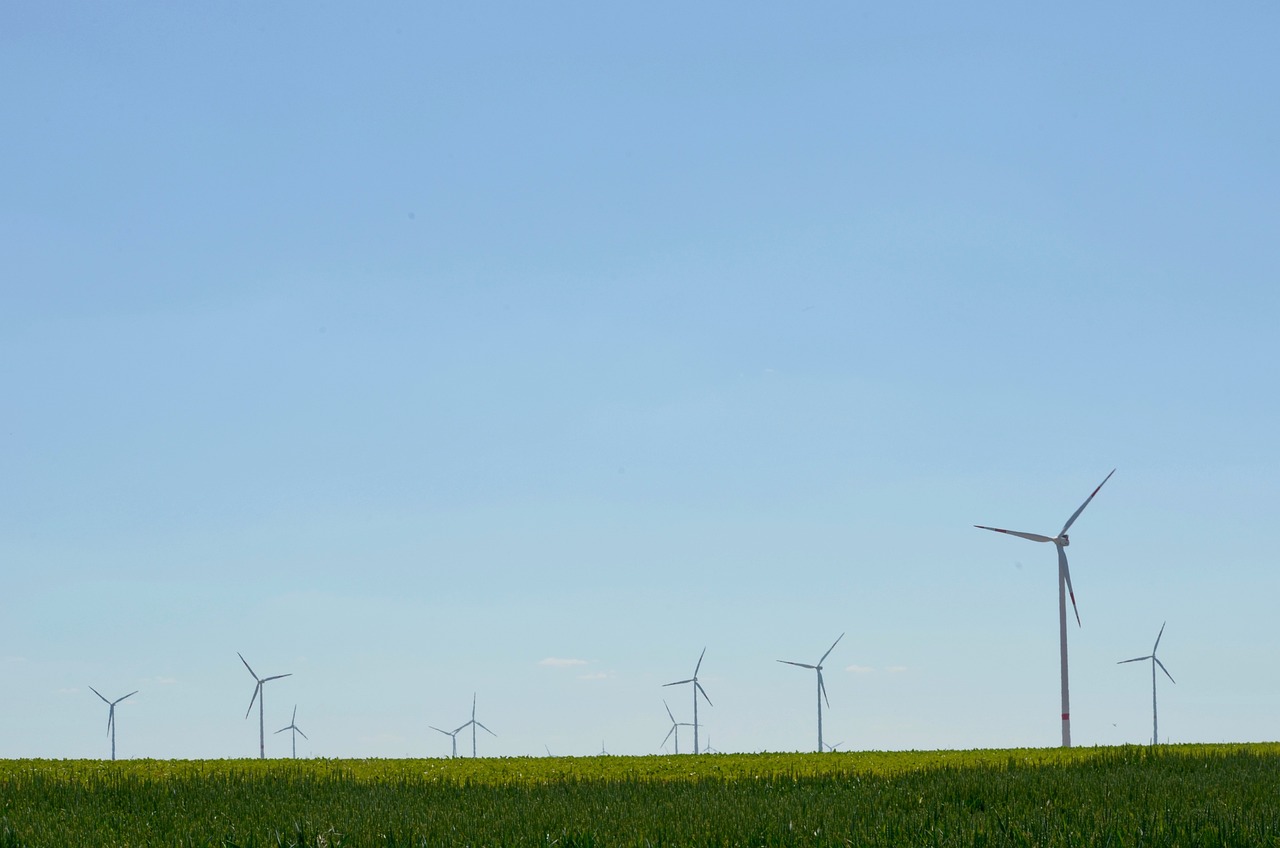
Land Conservation Efforts
Land conservation efforts play a pivotal role in the establishment and maintenance of natural burial grounds. These sites are not just places to rest but are also sanctuaries for biodiversity and a testament to our commitment to environmental stewardship. By choosing eco-friendly burials, we are actively participating in a movement that prioritizes the health of our planet. Imagine a world where our final resting places contribute to the flourishing of flora and fauna rather than detracting from it. This is the vision behind land conservation initiatives associated with green burials.
Natural burial grounds often integrate conservation strategies that protect local ecosystems. These efforts can include the preservation of native plants, the restoration of habitats, and the creation of wildlife corridors. For instance, when a natural burial site is established, it can serve as a refuge for various species, allowing them to thrive in their natural environment. This not only enhances biodiversity but also helps combat climate change by sequestering carbon in the soil and vegetation.
Moreover, many organizations that manage these burial grounds engage in active land management practices. They may implement controlled burns to maintain healthy ecosystems or remove invasive species that threaten native biodiversity. These practices ensure that the land remains vibrant and ecologically balanced, allowing future generations to enjoy the beauty of nature.
In addition to ecological benefits, land conservation efforts foster community engagement. Local residents often participate in planting days or conservation workshops, creating a sense of ownership and pride in their natural burial grounds. This involvement not only strengthens community ties but also raises awareness about the importance of sustainability and environmental protection.
The impact of these efforts can be profound. By preserving green spaces, we are not only honoring our loved ones but also ensuring that future generations inherit a healthier planet. As we reflect on the legacy we leave behind, it's essential to consider how our choices, even in death, can contribute to a more sustainable world.
In summary, land conservation efforts linked to eco-friendly burials are vital for protecting ecosystems, supporting wildlife habitats, and maintaining green spaces. They embody a holistic approach to end-of-life practices, aligning our final wishes with a commitment to the earth. Embracing these practices means choosing to leave a legacy that goes beyond ourselves, nurturing the environment for years to come.
- What is a natural burial ground? A natural burial ground is a cemetery that prioritizes eco-friendly practices, allowing bodies to decompose naturally without the use of toxic chemicals or non-biodegradable materials.
- Are biodegradable caskets required for green burials? While biodegradable caskets are highly recommended for eco-friendly burials, some natural burial grounds may allow traditional caskets if they meet specific environmental standards.
- How do I find a natural burial ground near me? You can search online for natural burial grounds in your area, or consult local funeral homes that specialize in green burials for recommendations.
- What are the legal requirements for eco-friendly burials? Legal requirements vary by state, including permits and zoning laws. It's essential to research local regulations before planning a green burial.
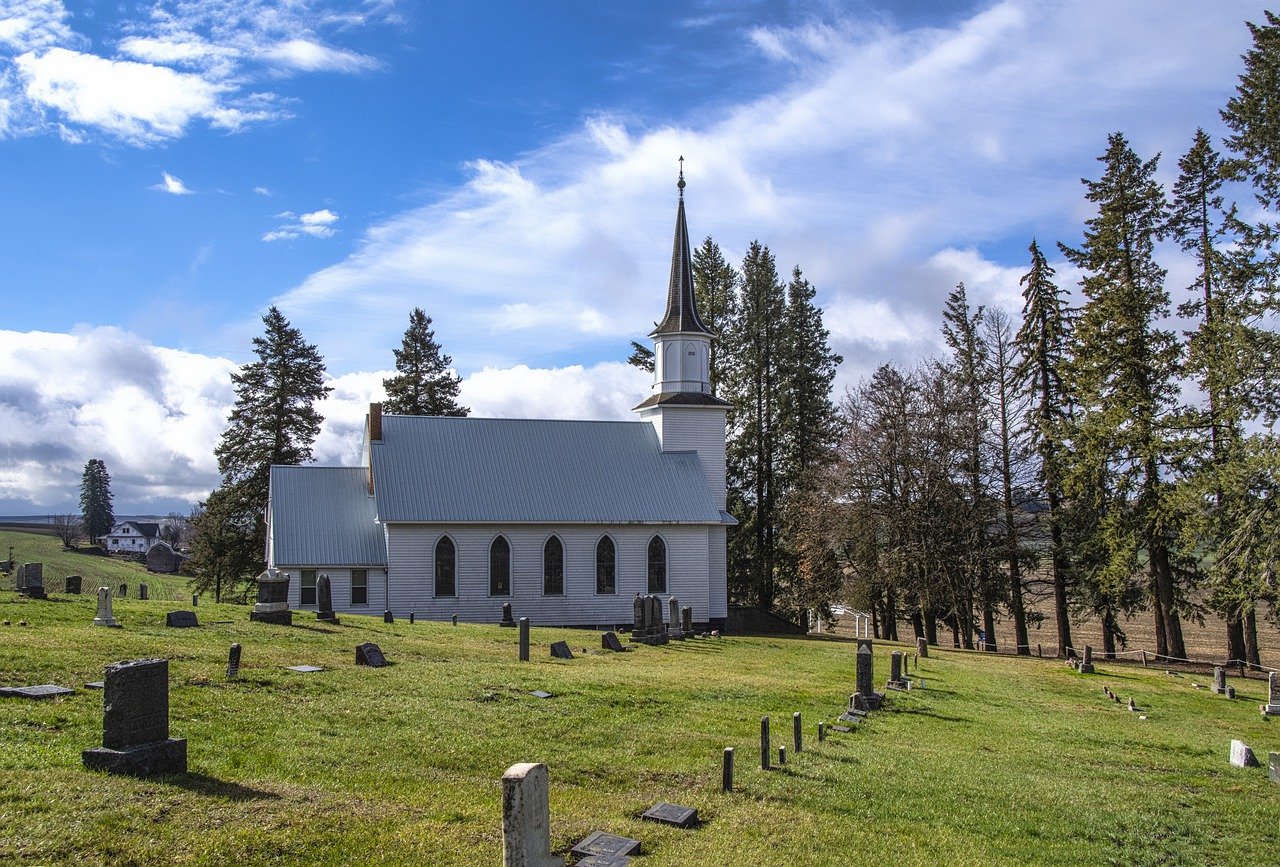
Community Involvement
Community involvement plays a pivotal role in the success and sustainability of natural burial grounds. When local residents come together to support these initiatives, they not only help establish a greener burial option but also foster a profound sense of community and shared responsibility. Imagine a neighborhood where families unite, not just in grief but in honoring their loved ones while simultaneously caring for the planet. It’s a beautiful synergy that can transform the way we view death and remembrance.
One of the key aspects of community involvement is the opportunity for residents to participate in the planning and maintenance of natural burial sites. This can take various forms, from organizing volunteer days for site upkeep to participating in educational workshops that promote awareness about sustainable practices. For instance, local volunteers can help plant native trees and flowers, which not only beautify the area but also support local wildlife. This kind of engagement creates a lasting legacy, where the memories of those who have passed are intertwined with the growth and health of the community's natural environment.
Moreover, community members can advocate for the establishment of natural burial grounds by engaging with local government and zoning boards. This advocacy might include:
- Gathering signatures for petitions
- Attending town hall meetings
- Collaborating with environmental organizations
By taking these steps, communities can influence local policies, ensuring that eco-friendly burial options are accessible to everyone. It’s not just about creating a burial site; it’s about creating a space that reflects the values of the community—values like sustainability, respect for nature, and honoring life.
Furthermore, communities can host events that celebrate life and nature, such as memorial trees planting days or community picnics at natural burial sites. These gatherings can serve as a reminder of the interconnectedness of life and death, reinforcing the idea that even in loss, there is a chance to give back to the earth. They can also provide comfort to grieving families, reminding them that they are not alone in their journey.
In conclusion, community involvement is not just beneficial but essential for the growth and success of eco-friendly burial practices. By working together, communities can create a sustainable legacy that honors both their loved ones and the planet. The more people engage in these practices, the more we can shift the narrative around death, making it a part of a larger conversation about life, sustainability, and responsibility.
Q: What is a natural burial ground?
A natural burial ground is a designated area where individuals can be buried in a way that is environmentally sustainable, often without the use of embalming fluids or traditional caskets.
Q: How can I get involved with a local natural burial ground?
You can start by reaching out to local organizations that promote eco-friendly practices, attending community meetings, or volunteering for clean-up and planting days at the burial site.
Q: Are there legal requirements for establishing a natural burial ground?
Yes, each state has different regulations regarding burial practices, including zoning laws and permitting processes. It's essential to research these requirements before pursuing the establishment of a natural burial ground.
Q: What materials are used for biodegradable caskets?
Biodegradable caskets can be made from a variety of materials, including untreated wood, bamboo, or even cardboard, all designed to decompose naturally and minimize environmental impact.
Q: Can I have a traditional funeral service at a natural burial ground?
Absolutely! Many natural burial grounds allow for traditional services, including memorials and gatherings, as long as they align with eco-friendly practices.
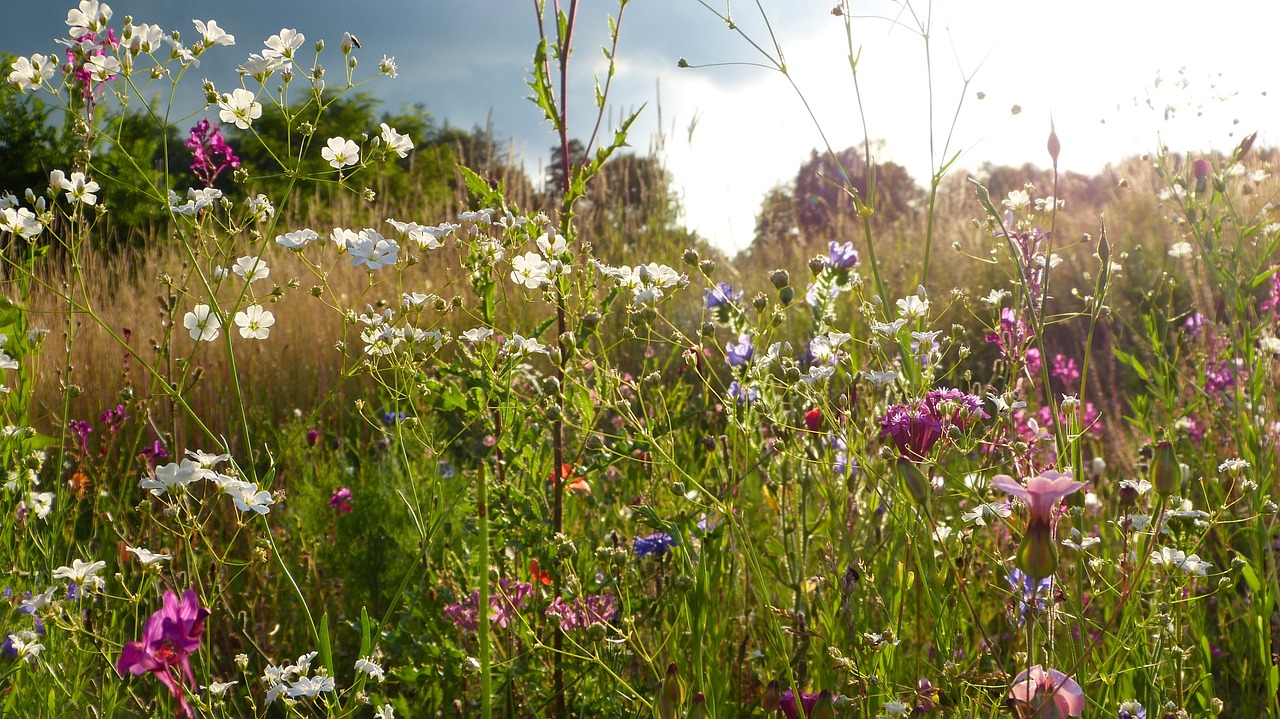
Biodegradable Caskets and Urns
In the realm of eco-friendly burials, play a pivotal role in ensuring that our final resting places are as gentle on the planet as possible. Unlike traditional burial containers, which are often made from materials that can take decades to decompose, biodegradable options are crafted from natural materials that break down over time, returning to the earth and nourishing the soil. Imagine a world where our loved ones’ remains contribute to the cycle of life rather than disrupt it; that’s the beauty of choosing biodegradable products.
These caskets and urns come in various designs and materials, each with its unique charm and sustainability factor. Common materials used in their construction include:
- Wood: Sustainably sourced wood, such as bamboo or pine, offers a beautiful and natural option.
- Cardboard: Surprisingly sturdy and entirely biodegradable, cardboard caskets can be customized for a personal touch.
- Woven materials: Caskets made from willow, seagrass, or other natural fibers provide a unique aesthetic while remaining eco-friendly.
- Compostable urns: These urns are designed to hold ashes and can even incorporate seeds, allowing a tree or plant to grow in memory of the deceased.
Choosing biodegradable caskets and urns not only helps reduce waste but also aligns with a growing movement towards sustainability and environmental consciousness. Families are increasingly aware of their carbon footprints and the impact of their choices, even in death. By opting for these eco-friendly alternatives, they embrace a holistic approach to life and death, celebrating the memory of their loved ones while also taking care of the planet.
Moreover, biodegradable options often come with a sense of peace and closure. Many families find comfort in knowing that they are making a choice that honors their loved ones while also being kind to the earth. It’s a beautiful metaphor for life itself—returning to the soil, giving back to nature, and becoming part of something larger. This connection to nature can be incredibly healing for those left behind, transforming grief into gratitude for the life lived and the legacy left.
In conclusion, as we navigate the complexities of end-of-life decisions, the choice of biodegradable caskets and urns stands out as a meaningful way to honor our loved ones while being stewards of the environment. It's a choice that resonates with the values of sustainability, respect for nature, and a commitment to future generations. So, when considering how to say goodbye, think about the lasting impact of your choices and the beautiful possibilities that biodegradable options can offer.
Here are some common questions regarding biodegradable caskets and urns:
| Question | Answer |
|---|---|
| What materials are biodegradable caskets made from? | Biodegradable caskets can be made from wood, cardboard, wicker, and other natural materials that decompose over time. |
| Are biodegradable urns environmentally friendly? | Yes, biodegradable urns are designed to break down naturally and can even be used to grow a tree or plant. |
| How long do biodegradable caskets take to decompose? | The decomposition time can vary based on materials and environmental conditions, but they generally break down much faster than traditional caskets. |
| Can I personalize a biodegradable casket? | Absolutely! Many manufacturers offer options for customization to reflect the personality and preferences of the deceased. |

Legal Considerations for Eco-Friendly Burials
When it comes to planning an eco-friendly burial, understanding the legal landscape is absolutely crucial. Many families are surprised to find that there are specific regulations governing burial practices, which can vary significantly from one state to another. It’s essential to be aware of these laws to ensure that you are making informed decisions that comply with local requirements. For example, some states may have restrictions on where you can establish a natural burial ground, while others might have specific guidelines on the types of biodegradable caskets and urns that are permitted.
One of the first steps in navigating this legal terrain is to research your state’s regulations regarding eco-friendly burials. Many states have embraced the concept of green burials, but the level of acceptance and the specific rules can differ. Here’s a quick overview of what to consider:
- State Regulations: Each state has its own set of laws that dictate what is permissible concerning burial practices. Some states, for instance, may require a burial permit even for natural burials, while others might not.
- Permitting Requirements: Before you can proceed with an eco-friendly burial, you may need to obtain certain permits. This could include permissions to use a designated burial site, especially if it’s on private land.
- Environmental Impact Assessments: In some regions, an environmental impact assessment might be necessary to evaluate how the burial could affect local ecosystems.
Understanding these factors can save you from potential legal headaches down the line. It's always advisable to consult with local authorities or a legal expert who specializes in burial practices to ensure compliance with all regulations. This way, you can focus on what truly matters: honoring your loved one’s memory in a way that aligns with your values and beliefs.
Moreover, the establishment of natural burial grounds often requires adherence to zoning laws. These laws dictate where such sites can be located and how they can operate. If you're considering creating a natural burial ground or using one, it's vital to understand these zoning regulations. They can sometimes be complex, but they are in place to protect both the community and the environment.
To further assist you in this journey, here’s a simple table summarizing key legal considerations for eco-friendly burials:
| Legal Aspect | Considerations |
|---|---|
| State Regulations | Variations in laws regarding burial practices and permits. |
| Permitting Requirements | Necessary permits for burial sites, especially on private land. |
| Zoning Laws | Regulations on where natural burial grounds can be established. |
| Environmental Assessments | Potential need for assessments to evaluate ecological impacts. |
In conclusion, while the idea of an eco-friendly burial is appealing, it’s essential to navigate the legal landscape carefully. By doing your homework and seeking guidance when necessary, you can ensure that your choices honor your loved one while respecting the laws designed to protect our environment and communities.
Q: What is the difference between a traditional burial and an eco-friendly burial?
A: Traditional burials typically involve embalming and non-biodegradable caskets, while eco-friendly burials use biodegradable materials and often avoid chemicals, allowing for natural decomposition.
Q: Are eco-friendly burials legal in all states?
A: Not all states have the same regulations regarding eco-friendly burials. It's important to check local laws to ensure compliance.
Q: Can I have a memorial service with an eco-friendly burial?
A: Absolutely! Many families choose to have a memorial service to celebrate the life of their loved one, regardless of the burial method.
Q: What materials are used for biodegradable caskets?
A: Biodegradable caskets are typically made from materials like wood, bamboo, or even cardboard, which break down naturally over time.

State Regulations
When it comes to eco-friendly burials, understanding the legal landscape is essential. Each state in the U.S. has its own set of regulations governing burial practices, and these laws can significantly influence the options available for families seeking sustainable alternatives. For instance, some states may have specific laws regarding the use of natural burial grounds, while others might impose restrictions on the materials used in biodegradable caskets and urns. It’s crucial for families to familiarize themselves with these laws to ensure they make informed decisions that align with their values.
Many states have adopted regulations that promote green burial practices, recognizing the importance of sustainability in end-of-life choices. However, in some regions, traditional burial practices still dominate, which can create challenges for eco-conscious families. For example, in states where conventional cemeteries are the norm, families may find it difficult to locate natural burial grounds that comply with local zoning laws.
To help navigate these complexities, here are some key factors to consider regarding state regulations:
- Licensing Requirements: Some states require burial grounds to be licensed, which can involve compliance with specific health and safety standards.
- Permitting Processes: Establishing a natural burial site may necessitate obtaining permits from local authorities, particularly if the land is being converted from another use.
- Environmental Considerations: States may have environmental regulations that impact the types of materials that can be used in biodegradable caskets and urns.
Understanding these regulations is not just about compliance; it’s about empowering families to make choices that resonate with their environmental values. Families interested in eco-friendly burial options should consult local laws and, if necessary, seek legal advice to ensure their plans align with state requirements. By doing so, they can honor their loved ones while also advocating for a greener future.
In conclusion, the legal framework surrounding eco-friendly burials varies widely from state to state, making it imperative for families to do their homework. By staying informed about the regulations that govern their choices, families can confidently pursue sustainable burial options that reflect their commitment to the planet.
Q: What is a green burial?
A: A green burial is an environmentally friendly way of disposing of a body, often involving biodegradable materials and minimal environmental impact.
Q: Are biodegradable caskets legal in all states?
A: While most states allow biodegradable caskets, it's essential to check local regulations as some may have specific requirements.
Q: How can I find a natural burial ground near me?
A: You can search online directories, contact local funeral homes, or consult with environmental organizations that focus on sustainable practices.
Q: What should I consider when planning an eco-friendly burial?
A: Consider the legal regulations in your state, the availability of natural burial grounds, and the materials used in caskets or urns.
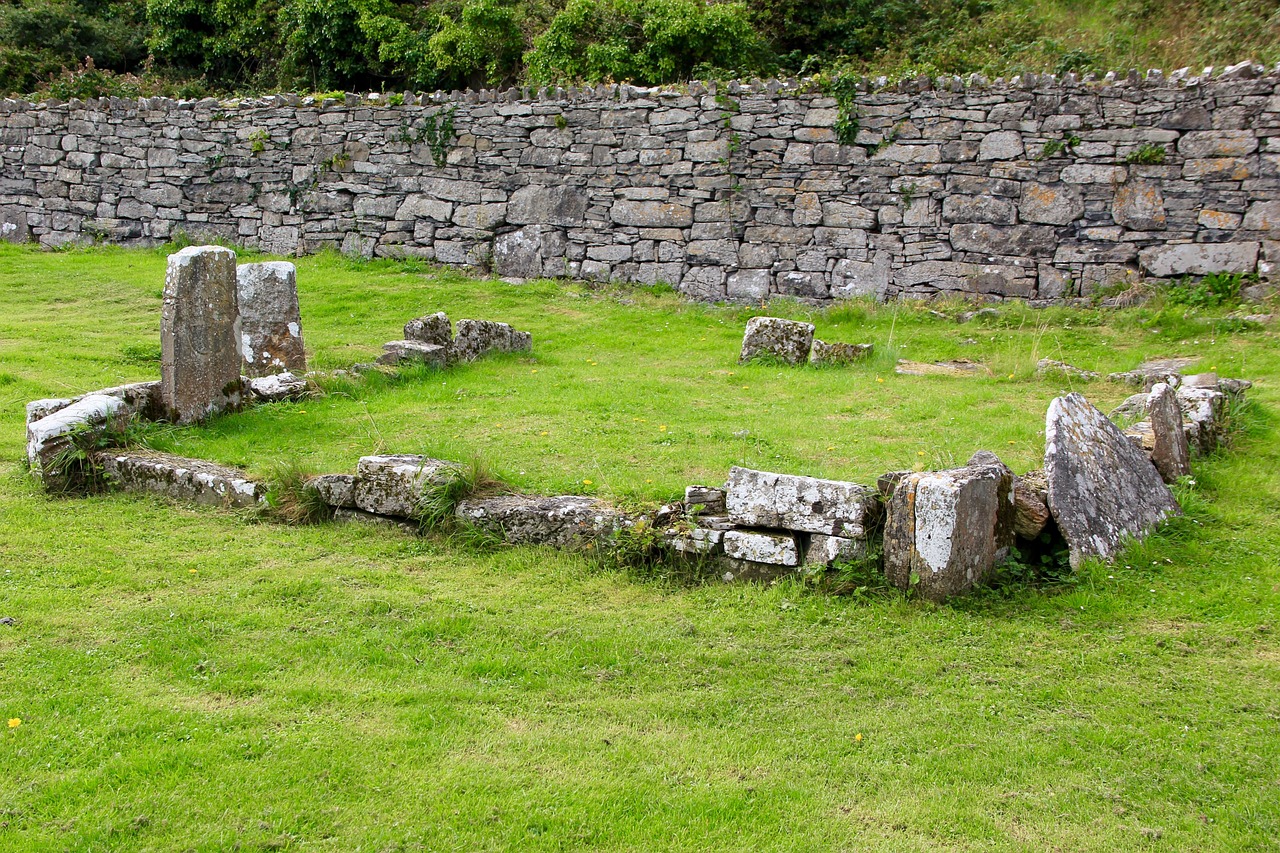
Permitting and Zoning
When it comes to eco-friendly burials, understanding the landscape is crucial for families and communities looking to embrace sustainable practices. Each state in the U.S. has its own set of regulations that dictate how burial grounds can be established and maintained. This means that what might be permissible in one area could be completely off-limits in another. Therefore, it is essential to conduct thorough research before moving forward with any plans.
One of the first steps in navigating these regulations is to check with local government offices. Often, the zoning laws will outline what types of land can be used for burial purposes. For example, some areas may require that land designated for burial grounds be located outside of residential zones or that it meets specific environmental standards. Understanding these requirements can help avoid potential legal issues down the line.
In addition to zoning regulations, obtaining the necessary permits is a vital step in the process. This can include everything from environmental impact assessments to health department approvals. The permitting process can vary significantly from one locality to another, and it often involves multiple layers of bureaucracy. It’s not uncommon for families to encounter delays or additional requirements, so patience and persistence are key.
Here’s a brief overview of the typical steps involved in securing permits and understanding zoning for eco-friendly burials:
- Research local zoning laws and regulations
- Consult with local government offices
- Submit necessary applications for permits
- Prepare for potential environmental assessments
- Engage with community stakeholders to address any concerns
Furthermore, community involvement can be immensely beneficial in advocating for eco-friendly burial options. By rallying support from local residents and organizations, families can create a compelling case for the establishment of natural burial grounds. This not only helps to ease the permitting process but also fosters a sense of shared responsibility for the environment.
In conclusion, while the journey toward establishing eco-friendly burial practices may seem daunting due to the complexities of permitting and zoning, it is entirely achievable with the right approach. By staying informed, engaging with local authorities, and building community support, families can pave the way for sustainable end-of-life options that honor their loved ones while protecting the planet.
- What is an eco-friendly burial? Eco-friendly burials are practices that minimize the environmental impact of traditional burial methods, using biodegradable materials and natural burial grounds.
- Are biodegradable caskets more expensive than traditional ones? While biodegradable caskets can vary in price, many options are comparable to traditional caskets, making them accessible for various budgets.
- How do I find a natural burial ground near me? You can search online for local natural burial grounds or consult organizations that specialize in eco-friendly burial practices for recommendations.
- What are the legal requirements for eco-friendly burials? Legal requirements vary by state and locality, so it is essential to check with local government offices for specific regulations and permitting processes.
Frequently Asked Questions
- What are eco-friendly burials?
Eco-friendly burials, also known as green burials, are practices that minimize environmental impact by using sustainable methods for disposing of human remains. This can include biodegradable caskets, natural burial grounds, and avoiding toxic embalming fluids.
- What are the benefits of choosing a green burial?
Green burials offer numerous benefits, such as reducing carbon emissions, conserving natural resources, and promoting healthier ecosystems. Additionally, they can provide emotional comfort to families by allowing them to honor their loved ones in a way that aligns with their values of sustainability.
- How do natural burial grounds work?
Natural burial grounds are designated areas where individuals can be buried in a way that preserves the natural environment. These sites often use biodegradable materials and avoid traditional cemetery practices, allowing the body to decompose naturally and return to the earth.
- Are there legal restrictions on eco-friendly burials?
Yes, legal restrictions vary by state and can affect eco-friendly burial practices. It's essential to research local regulations regarding burial methods, as well as any permitting or zoning laws that may apply to natural burial grounds.
- What materials are used in biodegradable caskets and urns?
Biodegradable caskets and urns are typically made from natural materials such as wood, bamboo, or recycled paper. These materials are designed to break down over time, allowing for a more sustainable and environmentally friendly burial option.
- How can communities get involved in establishing natural burial grounds?
Communities can participate in establishing natural burial grounds by advocating for sustainable practices, volunteering for conservation efforts, or supporting local initiatives that promote eco-friendly burial options. This involvement fosters a sense of shared responsibility for the environment.
- What should I consider before choosing an eco-friendly burial?
Before choosing an eco-friendly burial, consider factors such as local regulations, available burial options, and the emotional needs of your family. It's also helpful to discuss your wishes with loved ones and ensure everyone is on board with the decision.



















